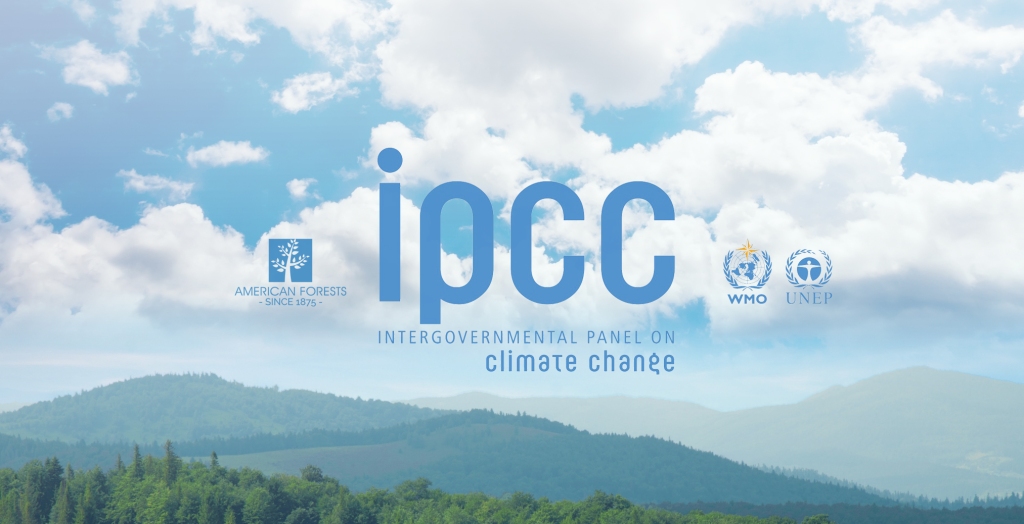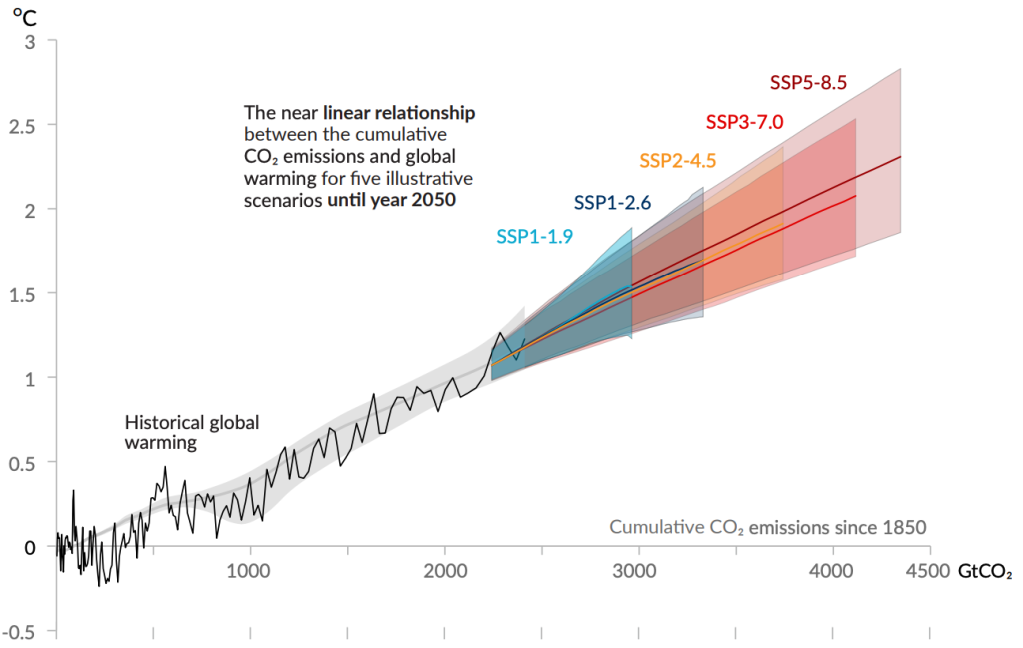(Part II of II)

This post is a continuation of the blog post prior. To read a summary of the first part of the Intergovernmental Panel on Climate Change’s August 2021 Report, please click here.
Climate Information for Risk Assessment and Regional Adaptation, part 1: Climate Extremes in the Short Term Will Be Modulated by Natural Drivers
– Natural environmental occurrences, including solar and volcanic acts, have partially masked human-caused surface global warming between 1998-2012. Despite this, the heating of the climate system persisted; (IPCC: ‘very high confidence,‘)
– Projected human-caused changes will either be amplified or reduced by internal variability. (An example of internal variability is the El Niño-Southern Oscillation: a natural climate phenomenon that occurs over three stages, involving a warming or cooling of the central and eastern tropical Pacific Ocean.) (IPCC: ‘high confidence,‘)
– Internal variability has largely been responsible for the amplification or reduction of human-caused precipitation changes across many land regions; (IPCC: ‘high confidence,’)
– It is likely that at least one large explosive volcanic eruption would occur during the 21st century. Said eruption would reduce global surface temperature and precipitation, especially over land, for one to three years. (IPCC: ‘medium confidence.’)
Climate Information for Risk Assessment and Regional Adaptation, part 2: As Global Warming Increases, Climate Impact Drivers Will Occur With Greater Frequency
(Climate Impact-Drivers (‘CIDs’) are physical climate system conditions (e.g. means, events, extremes) that affect an element of society or ecosystems. CID types include heat and cold, wet and dry, wind, snow and ice.)
– All regions are projected to experience further increases in hot CIDs and decreases in cold CIDS; (IPCC: ‘high confidence,’)
– Further decreases are projected in permafrost, snow, glaciers and ice sheets, and Arctic sea ice. These changes would be larger at 2C warming or above, than at 1.5C; (IPCC: ‘high confidence,’)
– At 1.5C warming, heavy precipitation and associated flooding are projected to intensify and be more frequent in most regions of Africa and Asia (‘high confidence’), North America (‘medium to high confidence’), and Europe (‘medium confidence‘);
– More frequent and/or more severe ecological droughts are projected in all continents except Asia compared to 1850-1900; (IPCC: medium confidence,’)
– Unsurprisingly, the levels of confidence in rates of drought and heavy precipitation rise with each increment of global surface temperature increase. At 2C of warming, heavy precipitation and associated flooding are projected to become more intense and frequent across many regions of North America and Europe; (IPCC: ‘medium to high confidence,’)
– A small number or regions in Africa, Australasia, Europe, and North America are projected to be affected by increases in hydrological droughts; (IPCC: ‘medium confidence,‘)
– It is ‘very likely’ to ‘virtually certain‘ that regional mean sea level rise will continue throughout the 21st century, except in a few regions with substantial geologic land uplift rates;
– Cities intensify human-induced warming locally, and further urbanization together with more frequent hot extremes will increase the severity of heatwaves; (IPCC: ‘high confidence,‘)
– Concurrent heatwaves and droughts are likely to become more frequent.

Climate Information for Risk Assessment and Regional Adaptation, part 3: Low-Likelihood Outcomes, Including Complete Ice Sheet Collapse, Cannot be Ruled Out Completely
– If global warming exceeds the assessed very likely range for a given GHG emissions scenario, global and regional changes of the climate system would also exceed their very likely ranges; (IPCC: ‘high confidence,‘)
– Such low-likelihood high warming outcomes are associated with potentially very large impacts, including more intense and more frequent heatwaves and heavy precipitation;
– Abrupt responses and tipping points of the climate system, including strongly increased Antarctic ice sheet melt, cannot be ruled out; (IPCC: ‘high confidence,’)
– If global warming increases, some compound extreme events (a combination of hazardous factors that contribute to a significant risk, e.g. a heatwave plus drought) with low likelihood in the past will increase in likelihood, intensity, and duration; (IPCC: ‘high confidence,’)
– The Atlantic Meridional Overturning Circulation is very likely to weaken over the 21st century for all emission scenarios. The AMOC “transports warm, salty water from the tropics to northern Europe and then sends colder water back south along the ocean floor.” This could bring extreme cold to Europe and parts of North America, raise sea levels along the U.S. East Coast and disrupt seasonal monsoons.
Limiting Future Climate Change, part 1: We Need to Reach Net CO2 Emissions and Significantly Reduce GHGs If We Are to Ever Reduce the Impacts of Human-Induced Climate Change

Source: IPCC Summary for Policy Makers, August 7th 2021 (p. 37)
– The Report reaffirms with high confidence that in SSP5-8.5, there is a near linear relationship between anthropogenic CO2 emissions and global warming;
– Reaching net-zero CO2 anthropogenic emissions is a requirement to stabilize human-induced global temperature increase at any level. Limiting global temperature increase to a specific level cannot be done without limiting cumulative CO2 emissions;
– If global net negative CO2 emissions were to be achieved and sustained, the global CO2 induced surface temperature increase would be gradually reversed but other climate changes would continue in their current direction for decades to millennia; (IPCC: ‘high confidence,’)
– In the low and very low GHG emission scenarios, assumed reductions in anthropogenic aerosol emissions lead to a net warming, while reductions in methane and other ozone precursor emissions lead to a net cooling. The short lifetime of both methane and aerosols means these climate effects partially counterbalance each other. (IPCC: ‘high confidence.‘)
Limiting Future Climate Change, part 2: If Scenarios SSP1-1.9 and SSP1-2.6 Were to Come to Fruition, There Will Be a Discernible Difference in Air Quality Versus Scenarios SSP3-7.0 and SSP5-8.5
– Emission reductions in 2020 associated with measures to reduce the spread of COVID-19 led to temporary but detectable effects on air pollution; (IPCC: ‘high confidence,‘)
– Reductions in GHG emissions also lead to air quality improvements. However, in the near term (2021-2040), even in scenarios SSP1-1.9 and SSP1-2.6, these improvements are not sufficient in many polluted areas to achieve air quality guidelines specified by the WHO; (IPCC: ‘high confidence,’)
– Scenarios with low and very low GHG emissions would lead to substantially smaller changes in a range of CIDs. By the end of the century, these scenarios would strongly limit the change of several CIDs, including extreme sea level events, flooding, and exceeding of dangerous heat thresholds. (IPCC: ‘high confidence.‘)
Conclusion:
As much as can be predicted, there will always be climactic instances we still cannot anticipate. Human-induced climate change may reduce or increase the rate CIDs and/or other predictions the IPCC only has with medium to low confidence. However, we should not take this news to mean we should resort to becoming climate nihilists. Just because we cannot predict every part of our planet’s future, does not mean we should give up and let it happen to us. Similarly, just because the high and very high GHG emission scenarios would be cataclysmic, does not mean they are our certainty.
The GHG emission low and very low emission scenarios largely indicate that if followed, Earth’s climate conditions will not be too dissimilar to what we are experiencing in 2021. Freak snow storms, hurricanes, flooding, earthquakes, deadly heatwaves – this is our reality. But it need not be worse than this. The IPCC, along with innumerable climate NGOs, have made it patently clear what needs to be done and by when to ensure we meet the low or very low emission goals and veer our way back to an Earth capable of repair. If not – the planet will keep on going. She will persist, just without humans at the helm.
Interested in seeing what countries are heading towards the 1.5C goal? Check out Climate Action Tracker. (As of publication, only Morocco are close to this goal.)
Leave a comment